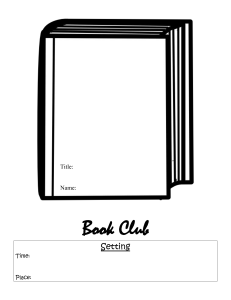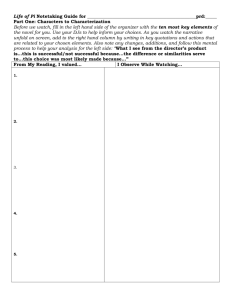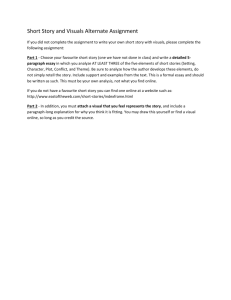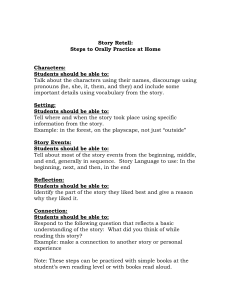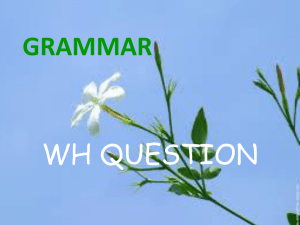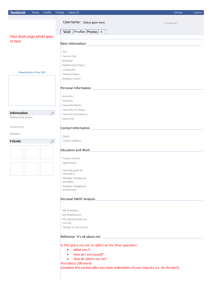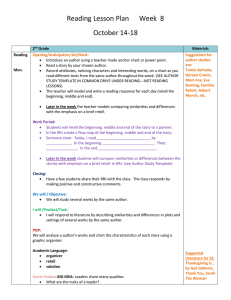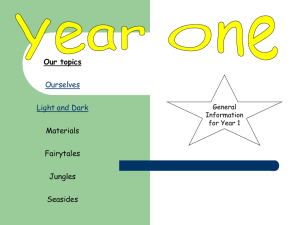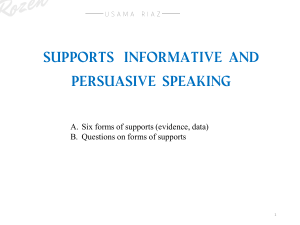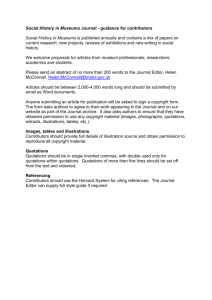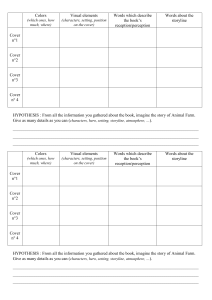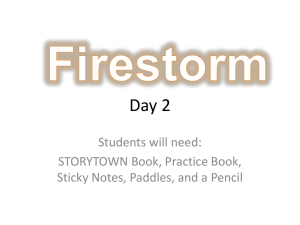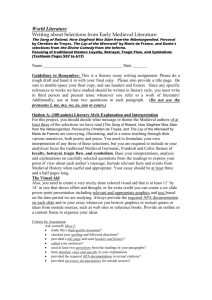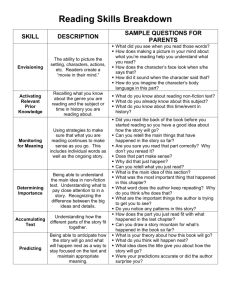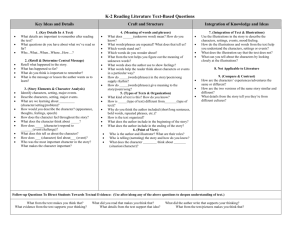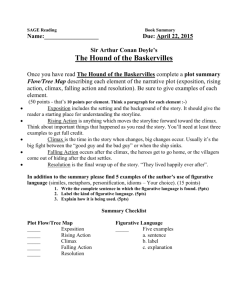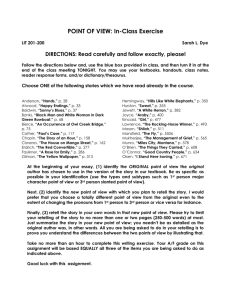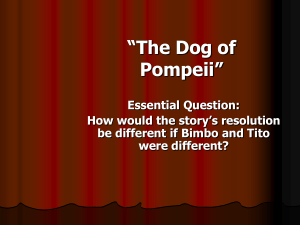Reading Literary Text Overview
advertisement
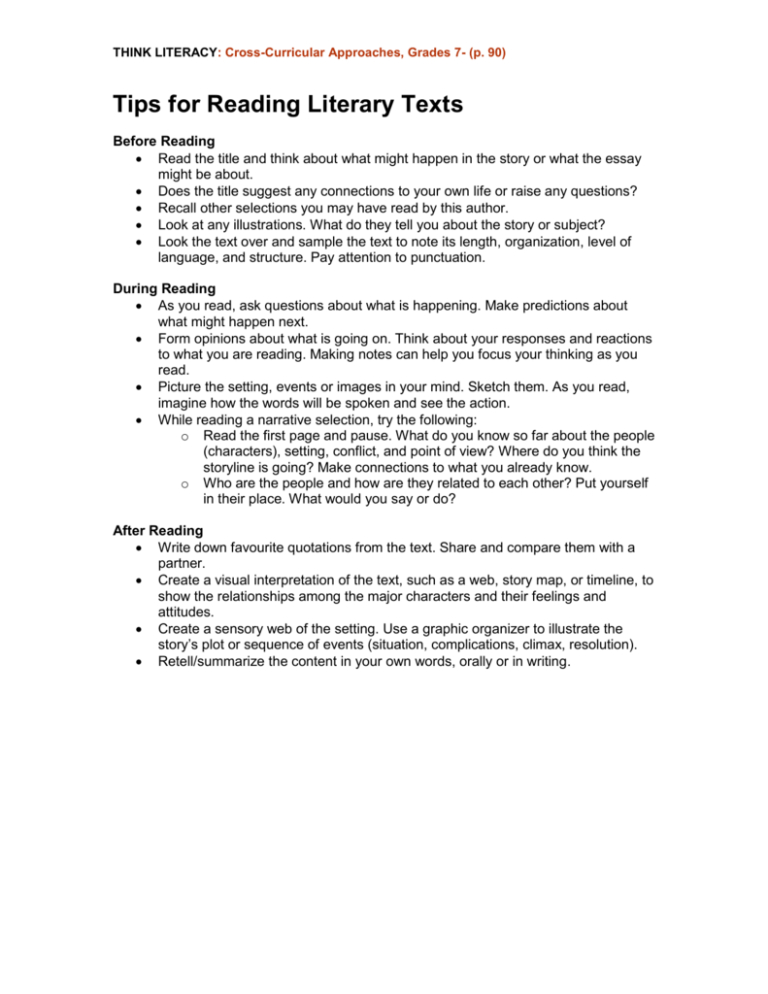
THINK LITERACY: Cross-Curricular Approaches, Grades 7- (p. 90) Tips for Reading Literary Texts Before Reading Read the title and think about what might happen in the story or what the essay might be about. Does the title suggest any connections to your own life or raise any questions? Recall other selections you may have read by this author. Look at any illustrations. What do they tell you about the story or subject? Look the text over and sample the text to note its length, organization, level of language, and structure. Pay attention to punctuation. During Reading As you read, ask questions about what is happening. Make predictions about what might happen next. Form opinions about what is going on. Think about your responses and reactions to what you are reading. Making notes can help you focus your thinking as you read. Picture the setting, events or images in your mind. Sketch them. As you read, imagine how the words will be spoken and see the action. While reading a narrative selection, try the following: o Read the first page and pause. What do you know so far about the people (characters), setting, conflict, and point of view? Where do you think the storyline is going? Make connections to what you already know. o Who are the people and how are they related to each other? Put yourself in their place. What would you say or do? After Reading Write down favourite quotations from the text. Share and compare them with a partner. Create a visual interpretation of the text, such as a web, story map, or timeline, to show the relationships among the major characters and their feelings and attitudes. Create a sensory web of the setting. Use a graphic organizer to illustrate the story’s plot or sequence of events (situation, complications, climax, resolution). Retell/summarize the content in your own words, orally or in writing.
